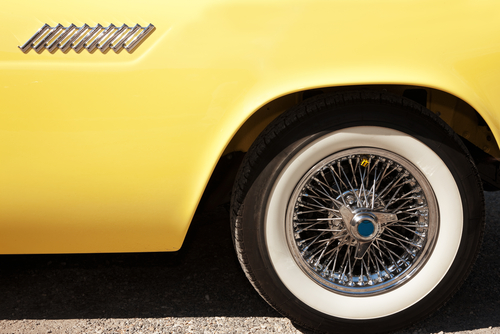Classic Car Insurance: Determining the Market Value of Your Vehicle
Classic Car Insurance: Determining the Market Value of Your Vehicle
Whether you are buying or selling a classic car, you will have many financial considerations to make. If you are buying, you’ll want to purchase classic car insurance as soon as your vehicle purchase in made. In addition, you will of course want to determine the vehicle’s fair market value. There are many publications in existence that can help you determine what that value is, including the Old Car Buyers Guide, Hemmings, Collectible and Special Interest Car Appraisal Guide & Directory, and more. Their price guides rate a car’s value using 6 categories according to their conditions, a system frequently referred to as the “100 Point System”.
How do you implement this system? 20 categories are rated on a scale of one to five, using five as the maximum value. Then total your points for all 20 categories. These categories include; inspecting and rating the exterior, inspecting and rating the paint, glass, and trim, checking the operation of the engine, and more. Once the points are totaled, they should be compared to the 100 point maximum. Use this six category valuation to determine the fair market value of your vehicle.
Category 1: 90+ points
This is a classic car that rarely moves. It may sit in a museum or other type of temperature and humidity controlled area. When it does move, it goes into an enclosed trailer to a national car show where it has a good chance of winning first place.
Category 2: 80-89 points
This is an almost flawless car. Classic car experts can typically tell you if there is anything wrong with this car. It is very often mistaken for a Category 1 car.
Category 3: 70-79 points
This car is a show quality vehicle, and is the car that most hobbyist collectors own. It’s not perfect but it’s close enough for the car enthusiasts and owner. It might have some non-original parts and upgrades but nothing that would keep it from becoming a Category 2 with some time and money invested.
Category 4: 60-69 points
This is a functioning car in fair condition that you could use as a daily driver. It’s important to note however, that there are certain provisions for mileage when it comes to classic car insurance.
Category 5: 40-59 points
This car is more or less complete but needs major restoration. Buying a car in this category is considered a risk by many classic car collectors, unless you’re not worried about spending more than it may be worth.
Category 6: Any car under 40 points
Many classic car enthusiasts will say that this is a car that is simply not worth investing any time or money in, even if you want to attempt to sell it.
At Condon Skelly, we know how exciting it can be to start a classic car collection. We’ve been helping our customers protect their classics with affordable, industry-leading classic car insurance coverage since 1967. We’re a group of collectors, enthusiasts, and professionals who specialize in insuring all types of collector vehicles. For more information, please contact us today at (866) 291-5694.









